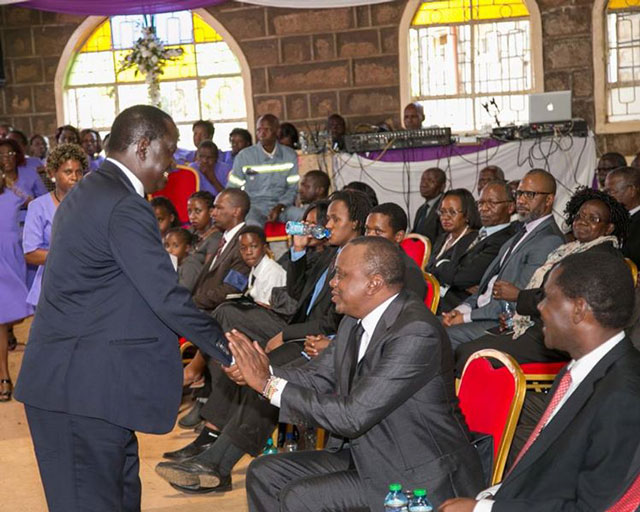
In 2013 a biometric system of voting and tallying results partly collapsed, stoking Odinga’s suspicions the poll was rigged in favour of Kenyatta, who won by just 800,000 votes.
However he took his complaints to the courts instead of the streets, and while there were some riots and looting, the election largely went off peacefully.
In the run up to this year’s election Odinga has disputed the company chosen to print presidential ballots, the process in which results will be announced and the presence of dead people on the voters register.
“We are prepared to protect our vote and avoid electoral theft,” Odinga told a recent rally.
– ‘No credible agenda’ –
During a frenzied final push of campaigning around the country, Kenyatta has accused Odinga of trying to stoke violence, while having “no credible agenda”.
Kenyatta, 55, is seeking re-election after a first term in which he was credited with a massive infrastructure drive and overseeing steady economic growth of more than five percent.
However his administration has been dogged by several graft scandals, with the country dropping six points in Transparency International’s corruption index in 2016.
According to opinion polls, voters’ main concern is soaring food prices due to inflation and drought. Kenyatta’s campaign has also been marred by anger over a shortage of the country’s staple, maize meal.
More than 19 million Kenyans are registered to vote in the election. To avoid a second round, the winning candidate must score more than 50 percent of the overall vote, and 25 percent of the vote in at least 24 counties.
RELATED STORY
Kenya’s 2017 elections will be like none before…. Here’s why
 The Independent Uganda: You get the Truth we Pay the Price
The Independent Uganda: You get the Truth we Pay the Price



